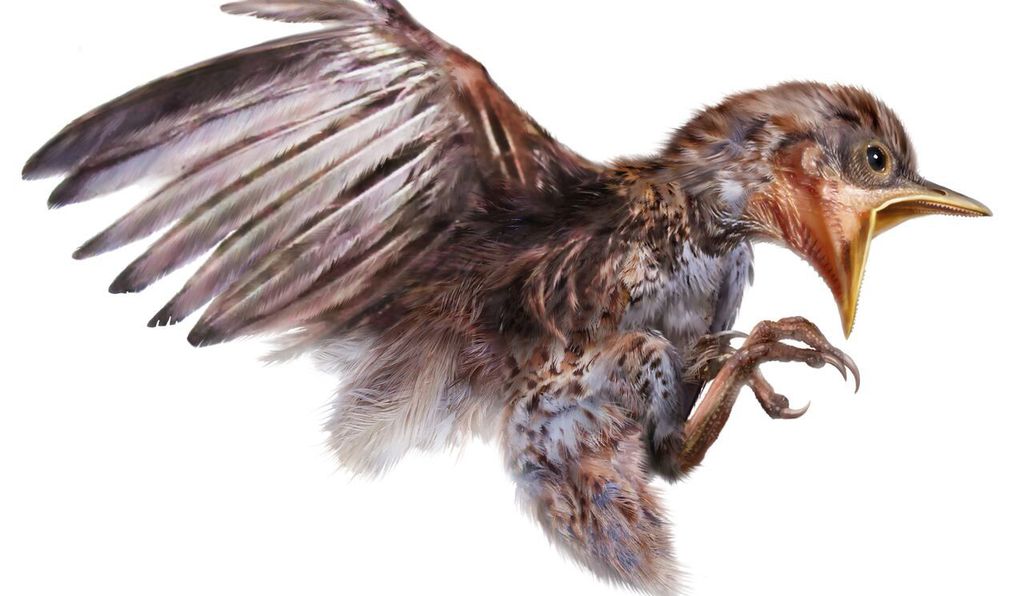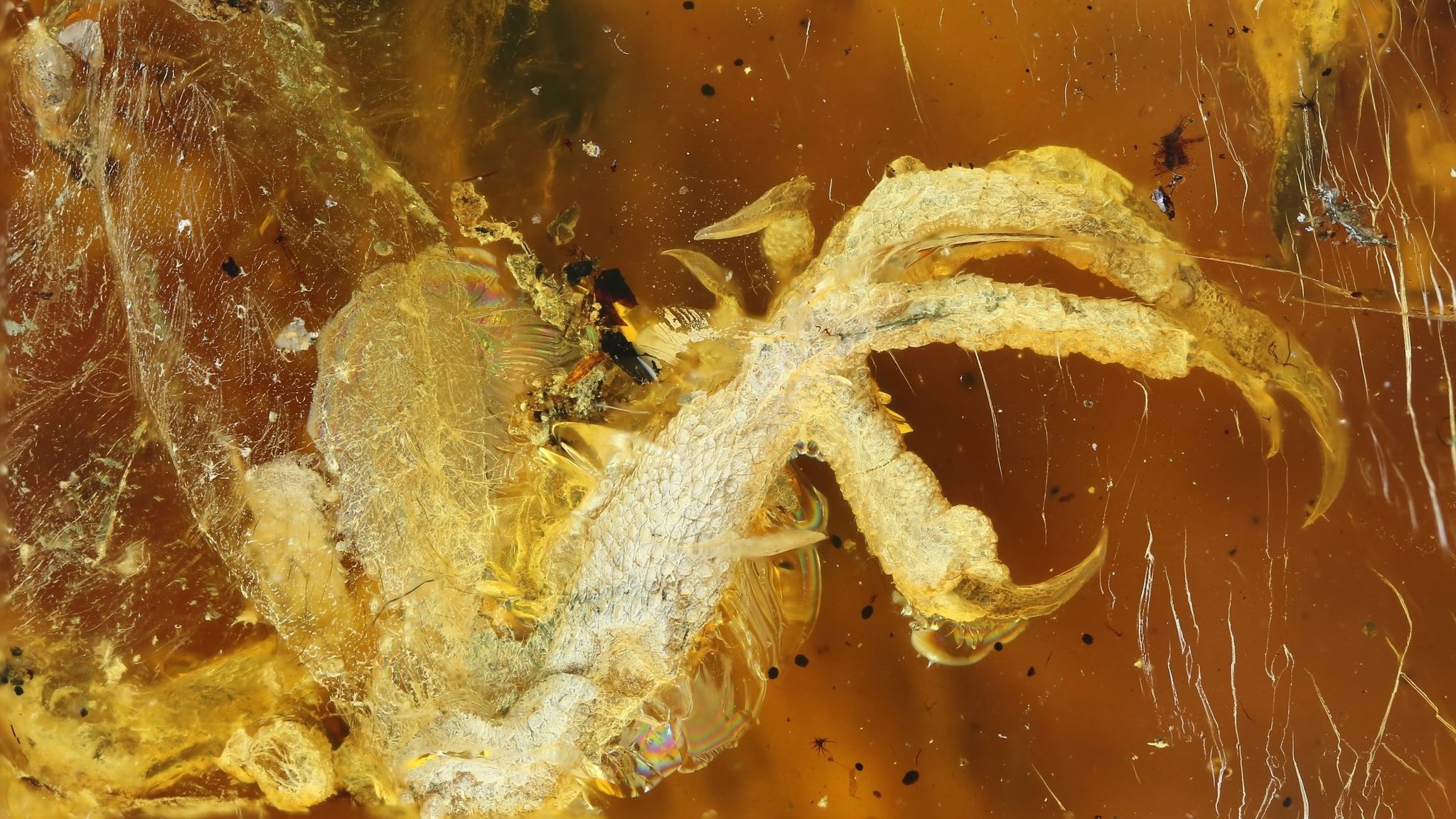A small bird is a big find for paleontologists.
The remains of a hatchling that dates back to the time of the dinosaurs was discovered fossilized in 99-million-year-old amber. It’s the best-preserved specimen of its kind, according to findings published Tuesday in the journal Gondwana Research.
Found in Myanmar, the Cretaceous-era bird was discovered with its head, one wing, both feet, and much of its skin and feathers intact. The fossil belongs to the enantiornithes, a group of birds that went extinct about 65 million years ago, according to National Geographic.

Less than three inches long, the preserved hatchling was scanned by scientists than digitally reconstructed using 3D rendering software to get a better look. Smithsonian Magazine reports the bird’s feathers more closely resemble ones belonging to dinosaurs than modern day fowls.
Scientists have known that dinosaurs and birds co-existed but little was known about the latter creatures from that era. This find provides crucial details that could help scientists better understand the connection between the two.

This article was featured in the InsideHook newsletter. Sign up now.






















